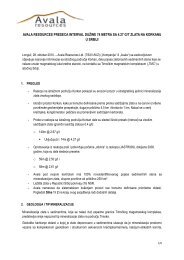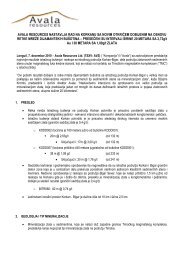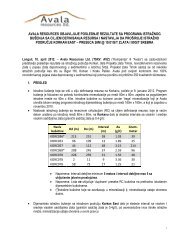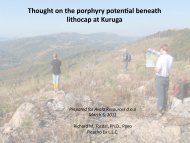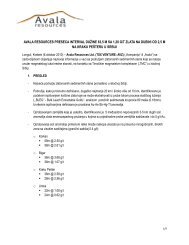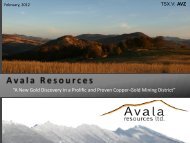Sillitoe, 2010 - Avala Resources Ltd.
Sillitoe, 2010 - Avala Resources Ltd.
Sillitoe, 2010 - Avala Resources Ltd.
You also want an ePaper? Increase the reach of your titles
YUMPU automatically turns print PDFs into web optimized ePapers that Google loves.
<strong>Sillitoe</strong>, <strong>2010</strong><br />
KUDD-‐034<br />
What part of a porphyry system might the deep<br />
Kuruga drill hole KUDD-‐034 have encountered?<br />
From top to ~462 m depth, the drill hole passed through rocks showing<br />
the typical hydrothermal silicate altera@on assemblage characteris@c of<br />
a porphyry Cu hydrothermal system.<br />
However, there was a remarkable lack of quartz veins as well as Cu-‐Fe<br />
sulfide minerals. The overall grade is likely low, perhaps in the 0.1+% Cu<br />
from the serici@c zone through the K silicate (potassic) altera@on zone.<br />
Pyrite where present is replacing Fe-‐bearing minerals (2 nd bio@te and<br />
magne@te) that form a pervasive replacement of mafic phases as well<br />
as veins<br />
Pyrite is also associated with anhydrite.<br />
The transi@on in the drill core from intensely altered to almost<br />
unaltered is very sharp (over 5 cm); sharp lateral gradients are expected<br />
as hydrothermal fluid flow on the margins will be largely ver@cal and in<br />
the case of the drill hole based on grain boundary diffusion due to the<br />
lack of significant veins.<br />
Taking all the observa@ons suggests that the drill hole KUDD-‐034 may<br />
have just cut the pervasive altera@on that extend outside the Cu shell<br />
(dashed line on cartoon to lej).




